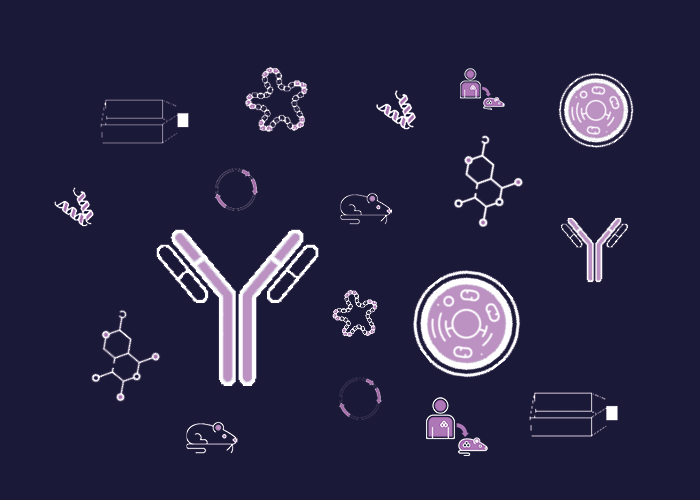Cat. #153539
MET1 SCC Cell Line
Cat. #: 153539
Organism: Human
Tissue: Skin
Model: Tumour line
This fee is applicable only for non-profit organisations. If you are a for-profit organisation or a researcher working on commercially-sponsored academic research, you will need to contact our licensing team for a commercial use license.
Contributor
Inventor: Irene Leigh
Institute: Queen Mary University of London
Tool Details
*FOR RESEARCH USE ONLY (for other uses, please contact the licensing team)
- Name: MET1 SCC Cell Line
- Alternate name: SCC, Keratinocyte
- Cancer: Skin cancer
- Cancers detailed: Skin;Skin cancer
- Organism: Human
- Tissue: Skin
- Donor: Single immunosuppressed patient, from a primary invasive SCC on the back of the hand that subsequently recurred locally twice. They were also derived from a distant axillary lymph node metastasis that was deemed to have occurred from the MET1 primary tumour
- Model: Tumour line
- Description: Keratinocyte cell line representing the primary acantholytic carcinoma, that originated from an invasive and ultimately metastatic SCC. MET1 is derived from a clinical progression of a primary epidermal tumour from the back of a left hand through to an invasive and metastatic lesion. Histology of the original tumour (from which MET-1 was derived) showed an acantholytic squamous cell carcinoma. MET1 has been used to understand aggressive primary SCC after it has metastasised. It is an important cell line for this specific stage in SCC cancer progression. MET1 is the first cell line in a unique series of epidermal cell lines representing different stages of malignant transformation, that were derived from a single, adult, immunosuppressed individual. Four keratinocyte lines, PM1-4, established from forehead skin are here compared with 4 squamous cell carcinoma (SCC) lines, MET1-4, derived respectively from a primary cutaneous tumour, two local recurrences and a distant metastasis of invasive SCC. Despite altered growth properties, the PM lines retained many features of normal keratinocytes including keratin phenotype, differentiation capacity and non-tumorigenicity in athymic mice. In contrast, from early passage, the MET lines displayed markedly reduced growth requirements, abnormal differentiation, aberrant K18 expression and tumorigenicity in athymic mice. The abnormal keratin profile of individual MET lines closely reflected the keratin phenotype of the tumour of origin. Although unusual HPV types were identified in the original tissue, there was no evidence of persistent virus within any cell line and it appears that HPV is not critical for maintenance of the immortal phenotype. The PM lines were distinctly different from invasive SCC lines and are likely to be useful in studies focusing on mutations that are important in early neoplastic progression. The SCC series represent primary, recurrent and metastatic carcinoma. Availability of such a series from the same individual will facilitate genetic analysis of the malignant process
- Production details: MET1 was derived from a primary and invasive SCC excised from the back of the left hand
- Biosafety level: 1
- Additional notes: Difference Between Clones All derived from the same individual, but from varying stages in progression of an SCC: invasive, recurrent and, subsequently metastatic. Keratinocyte lines MET1, MET2, MET3 and MET4 were derived, respectively, from an SCC excised from the back of the left hand (MET1), from 2 recurrent SCC arising at the same site in rapid succession (MET2 and 3)and from metastatic SCC within left axillary lymph nodes biopsied following the third excision (MET4).
Target Details
- Target: Squamous Cell Carcinoma line
Handling
- Format: Frozen
- Growth medium: Keratinocyte cell culture media supplemented with 10ng/ml EGF (Long term growth), DMEM/5% serum (Banking purposes)
- Shipping conditions: Dry ice
- Storage conditions: Liquid Nitrogen
Related Tools
- Related tools: MET2 SCC Cell Line ; MET4 SCC Cell Line
References
- Inman et al. 2018. Nat Commun. 9(1):3667. PMID: 30202019.
- Abikhair Burgo et al. 2018. JCI Insight. 3(17):. PMID: 30185657.
- Mekhdjian et al. 2017. Mol Biol Cell. 28(11):1467-1488. PMID: 28381423.
- Proby et al. 2000. Exp Dermatol. 9(2):104-17. PMID: 10772384.




